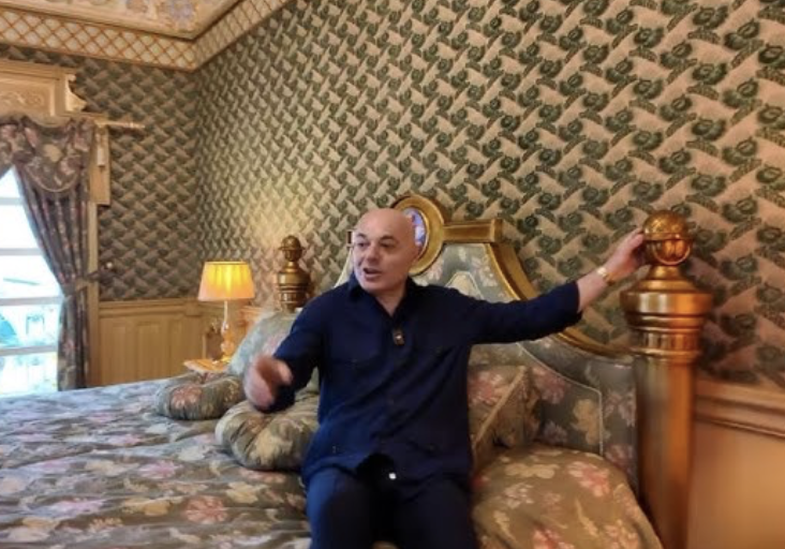
If you've ever driven along the Tirana-Durres highway, you've probably noticed a building that's unlike anything else around: a massive, classical palace, adorned with blue columns, statues, and a large dome, on top of a hill overlooking only... roads, roads, and more roads.
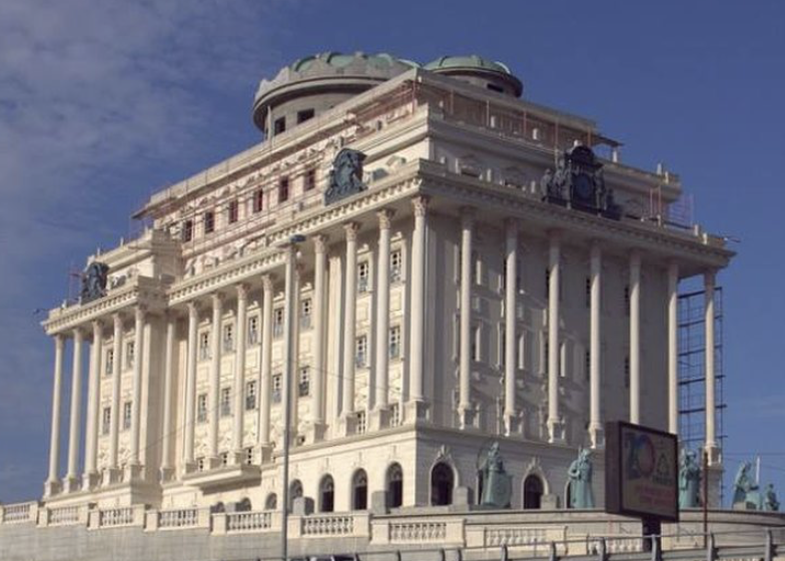
It's not a hotel (it's never functioned as such). It's not a museum. It's not a royal palace (although it behaves like one). It's the Amadeus Palace, owned by a wealthy businessman originally from Kosovo, Besim Elshani, who has decided to leave behind a "legacy," as sultans and emperors once did.
View this post on Instagram
And here we are today, standing in front of a building that makes you stop and ask: "Why? For whom?"
Take a grand, historic style – say Ottoman, Roman, or Baroque – mix it with some Disney-esque element, then add a dome, 40 columns, and a portrait of yourself in the lobby... and boom: We have kitsch style.
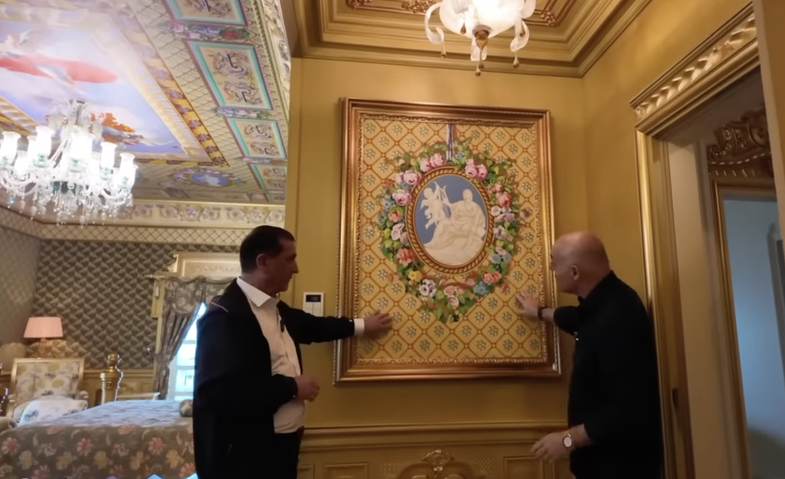
Kitsch is a style that "goes overboard" and is proud of it! It's always *extra*, more than necessary! When we say more, we mean it in the first sense of the word! More decor, more gold, more imitations!
Starting from this magnificent palace, which no one knows what it is used for, let's tell a little more about the kitsch style.

Kitsch architecture refers to an approach to design that is intentionally exaggerated or overly decorative—and is often seen in some ways as indicative of bad taste, but in other cases, even interesting.
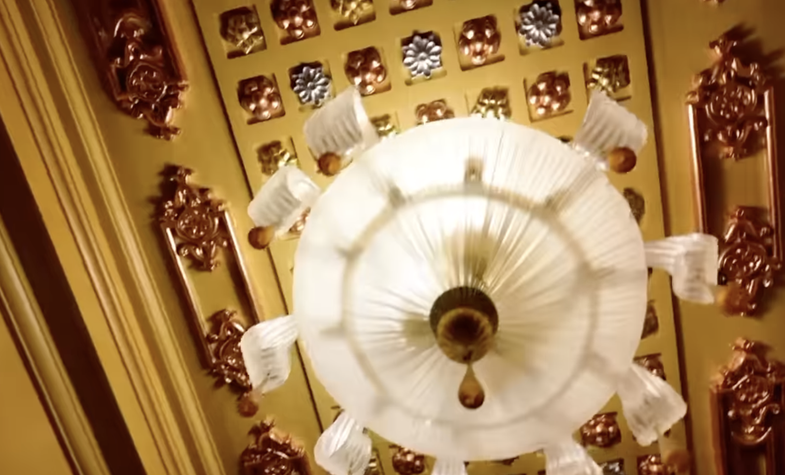
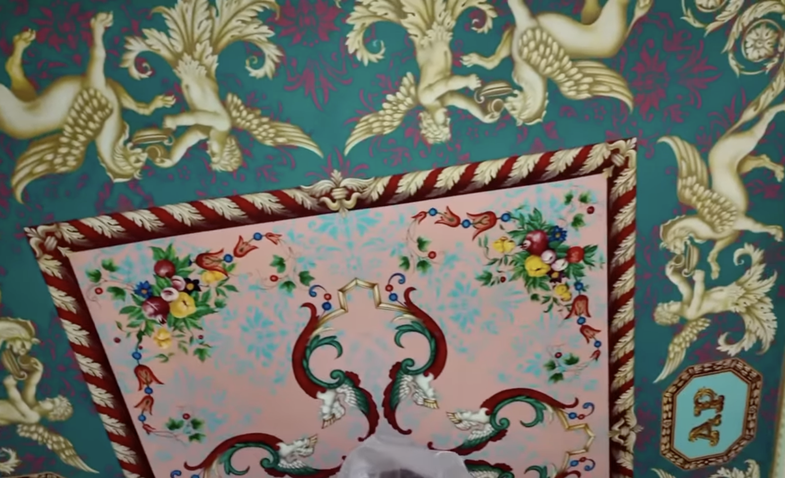
Characteristics of the kitsch style
More decoration!

Kitsch architecture tends to be overly ornate. For example: large, fake columns, gold-colored ornaments, or classical motifs used in a less than thoughtful way.
Innovation? No!
Imitation? Yes!
The kitsch style often imitates other styles, be it classical, baroque, or even futuristic, but leaving behind the original principles that these styles bring. In the case of kitsch, functionality is not primary, but appearance is.
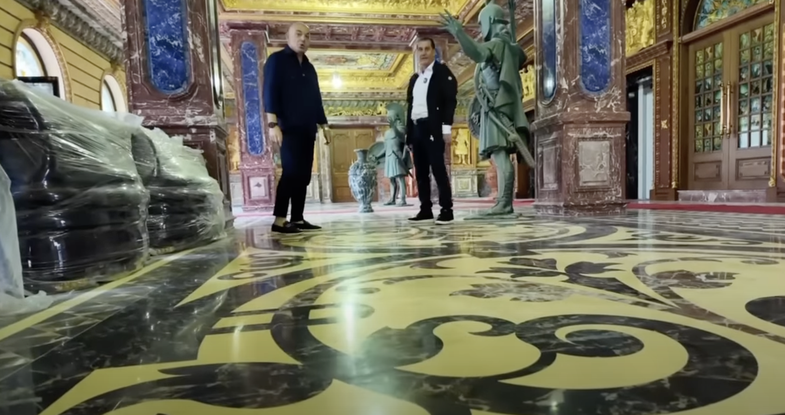
Strong colors
The colors in the kitsch style are very bright or loud. The goal is to attract attention and not to be in harmony with the surrounding environment.
The feeling of being in a theater hall
Kitsch buildings can look like theater stages, with exaggerated elements.
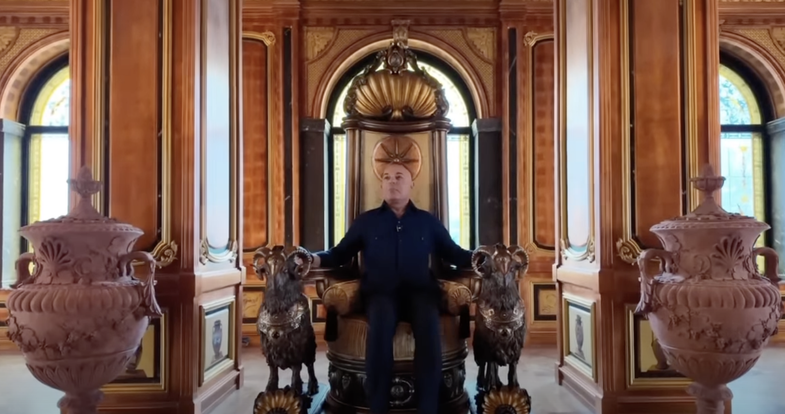
Amadeus Palace, magnificent, but for what?
The case of Amadeus Palace is a pure reenactment of the kitsch style. Mr. Elshani has spared nothing for this building: The highest quality marble that can be found. Murano chandeliers. Hand-painted ceilings. Chairs carved with eagles, Skanderbeg and everything that recalls Albanian history.
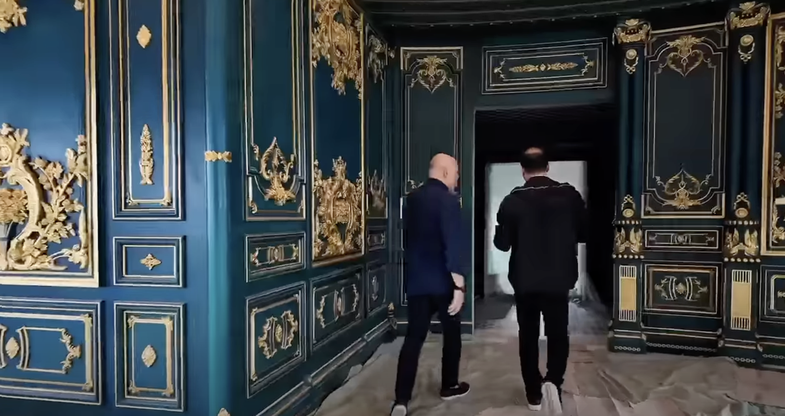
Ndërtesa ka qenë e mbyllur për publikun për më shumë se 15 vite. Asnjë klient, asnjë vizitor, përveç disa produksioneve muzikore që e kanë përdorur si sfond. Normalisht, kjo ka zgjuar edhe kuriozitetin se për çfarë përdoret apo se si duket nga brenda.
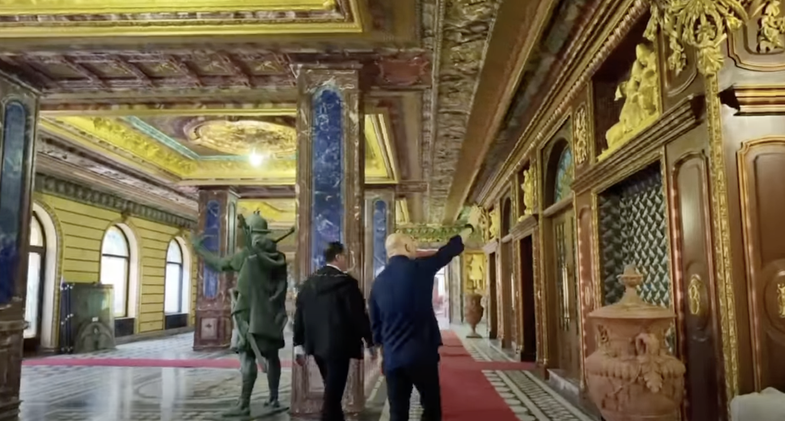
Ky nuk është një hotel. Është një panteon personal. Një ego trip i bërë prej guri, kolone dhe gdhendje. Një mënyrë për të thënë: “Unë isha këtu.”
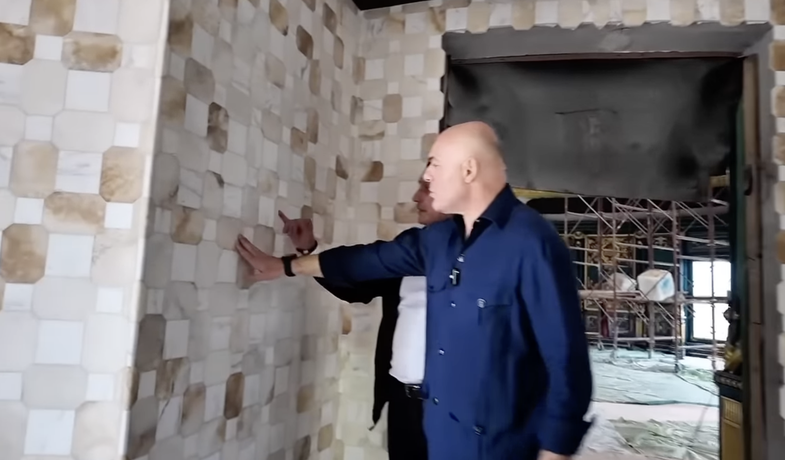
Sepse kitsch është si një filxhan me dekor prej floriri: ndoshta nuk pihet më mirë kafeja, por duket sikur jeta po të ecën. Në vende si Shqipëria, ku historia arkitektonike ka ndërprerje, vjen tundimi për të “krijuar” madhështinë nga hiçi.
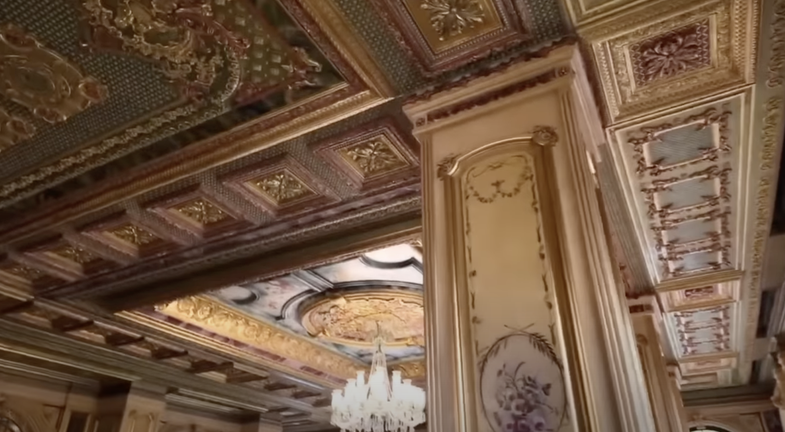
Nëse mendon se jemi unikalë, le të ndalemi për një sekondë në Shkup.Projekti “Shkupi 2014” ishte një mega-investim shtetëror për të krijuar identitetin kombëtar maqedonas përmes... ndërtesave historike që nuk ishin historike.
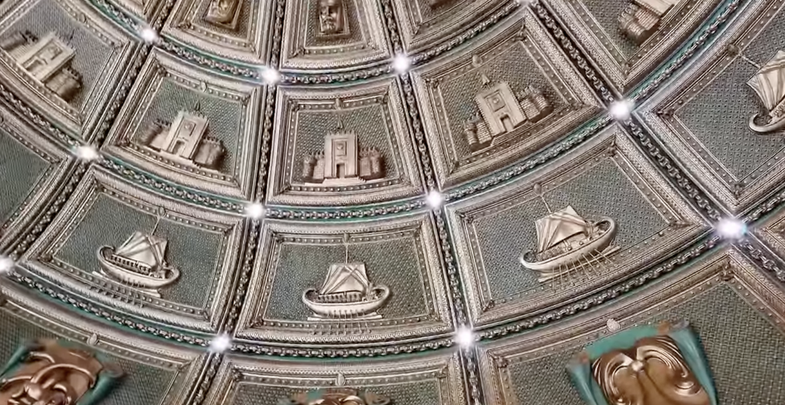
U ndërtuan: Pallate të reja në stilin e vjetër romak, Statuja gjigande të Aleksandrit dhe Filipit, Kolona dorike në çdo cep të qytetit, Luanë prej bronzi.
Gjithçka dukej si një studio xhirimi për “Game of Thrones”, por pa skenar.
Një këndvështrim i arkitekturës në Shqipëri
Në një Tiranë që sot po projekton të ardhmen me studio si Zaha Hadid, Boer dhe MVRDV, ndërtesa si Amadeus Palace duken si mbetje të një ëndrre të kaluar.
Por ndoshta ky është çelësi: Arkitektura kitsch nuk ndërtohet për të ardhmen. Ajo ndërtohet për të mos u harruar.
Kjo ndërprerje stilesh – nga romakët, tek otomanët, fashistët dhe më pas komunizmi – ka krijuar një boshllëk identiteti. Dhe ndoshta për këtë arsye, sot, disa njerëz përpiqen të krijojnë “trashëgimi të reja”, të bazuara më shumë në iluzion sesa në nevojë.
Pas Luftës së Dytë Botërore, regjimi komunist solli ndërtimin e lagjeve të tëra sipas modelit sovjetik – apartamente kolektive, pallate uniforme dhe funksionale, pa dekor, pa identitet. Ishin vite të betonit dhe praktikës, ku bukuria personale e arkitekturës u zëvendësua nga doktrina e barazisë së përçuar përmes uniformitetit.
Në shekullin e XX, arkitektura shqiptare mori një kthesë të re me ndërtimet e periudhës fashiste gjatë kohës së pushtimit italian. Bulevardi “Dëshmorët e Kombit”, ministritë dhe disa godina publike mbajnë ende stilin monumental racionalist të frymëzuar nga Mussolini – ndërtesa me fasada të pastra, të drejtpërdrejta dhe me qëllim propagandistik.

Pastaj vjen periudha e pushtimit osman – arkitektura u përqendrua në xhami, hamame, ura dhe pazare. Shembujt më të mirë janë pazari i Gjirokastrës, kalaja e Beratit apo Xhamia e Plumbit në Shkodër.
Shqipëria nuk ka pasur ndonjë vazhdimësi të fuqishme arkitektonike. Nga njëra anë, trashëgimia romake dhe ilire është e çmuar, por fragmentare – amfiteatro, rrënoja, mozaikë, që na kujtojnë një të kaluar perandorake që sot mund ta shohim vetëm në copëza.
Por që ta kuptojmë pse ndërtesa si Amadeus Palace ngjallin kaq shumë reagime, duhet të hedhim një sy më të gjerë mbi historinë e arkitekturës në Shqipëri.
In a poor country that has just emerged from an iron-fisted communist regime, it is understandable why there is a deep need for grandeur. For decades, Albanians lived in gray, identical palaces, without ornamentation, without color, without personality – where function was everything and aesthetics were considered a bourgeois luxury.
Today, this desire to "burst" from the boundaries of the past is also seen in the way we build apartments. We have 100 square meter apartments, with low ceilings, but with Victorian decor. Carved ceilings, walls with fake paintings, columns, marble and furniture that has nothing to do with the size or function of the house. The apartment has become the place where we "show ourselves", where we compensate for everything we once did not have. A small personal stage where we try to become princes, instead of citizens who once lived in total uniformity.





